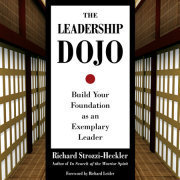IntroductionIn 1985, after sixteen years of working primarily with individuals and training professionals in a body-oriented psychology, I embarked on a new and unanticipated direction. I was selected to be part of a team that designed and conducted a bold and experimental training for the Army Special Forces. Our task was to increase the physical fitness, mental enhancement, and team cohesion of the Army’s Special Force’s soldier. In the words of an officer who promoted the program, “To train a holistic soldier.” For six months our team introduced twenty-five Green Berets to the newest methods of mind/body/spirit integration including aikido, other martial arts, nutrition, physical fitness training, stress reduction, meditation, warrior values, healing arts, team building, and communication skills. Code-named the Trojan Warrior Project after the Greek soldiers who hid inside the belly of a wooden horse this classified experiment produced positive off-the-chart results in every area tested. Even though these men were the most highly trained soldiers in the United States Army they radically improved their existing scores in the areas of physical fitness, mental alertness, team alignment, psychological balance, and moral integrity. The results of the Trojan Warrior Project made it apparent that the research I had been conducting in human performance for almost two decades with individuals and small groups could be accomplished in teams and organizations, with significant impact. At the conclusion of the program when the men returned to their units a curious phenomenon began to occur. Their commanding officers began reporting how the leadership skills of these men had dramatically improved. This was unexpected in that the curriculum of the Trojan Warrior Project was not specifically designed to address leadership issues, but to improve individual and team performance. Soon, the Trojan Warrior Project began to be referred to as a leadership program in military circles. Subsequent programs with the Navy Seals and Marine Corps produced similar comments from their senior leadership: the practices the men were doing created significant advances in their ability to lead, motivate, and mobilize their troops. While it made sense to me that the whole of one’s life--professional and personal–would positively be affected by the cultivation of mind, body, and spirit, it aroused my curiosity why the project produced such positive results in the area of leadership. Soon I began to look more closely at what was the fundamental ground upon which exemplary leadership stands and how it can be trained... With every team and organization I worked with I began by asking three questions. In an initial meeting with forty senior executives at AT&T, for example, I proposed the question, “What does a leader do?” and I received forty different answers. Responses included: motivate others, execute plans, manage meetings, delegate responsibility, give orders, design strategies, produce organizational charts, make speeches, inspire, balance the budget, hire the right people, build alliances, mobilize skills, maintain an optimistic mood, until we had a white board filled with the varied activities that took up an executive’s time. This informal poll was duplicated in other companies and inevitably it was the same--as many different answers as there were people. While all these activities were relevant it was clear to me that performing these tasks didn’t necessarily make a successful leader. I wanted to know who was the person behind these activities? What ground of being did they embody to successfully perform these actions? My second question-“What are the character values most essential to exemplary leadership?”-produced an entirely different response. The answers fell into a consistent and predictable pattern. Whether the poll was taken with Chilean telecommunication executives, the senior leadership of the Marine Corps, thirty -something technology entrepreneurs, European financiers, Directors of non-profits, United States Senators, CEOs of Fortune 100 companies, or Canadian utilities executives, the same virtues unfailing appeared. Honesty, accountability, integrity, vision, commitment, empathy, courage, trustworthiness, and self-control showed up time and again as the hallmarks of a leader. The literature and research on the character aspects of leadership also reflected this response. There seemed to be a universal consensus about the type of character values necessary for leadership and leading an honorable life. Moreover, this list of values was anything but new. As far back as Plato and Thucyides in the West, and the Indian epic
Bhagavad-Gita and Buddhist text
Abidharma in East, these attributes have long been distinguished as the cornerstones of exemplary leadership, and life. It seems that as long as human beings have recorded their history there has been universal agreement about what kind of person is a successful leader. When I asked my final question, “How do you teach these virtues?” I was met with blank stares. It seemed I had reached the end of the trail. Most managers and leaders could say very little about how the character values of leadership are learned and even among the brightest the conversation descended into clichés, “It’s either there or it isn’t”; “You can lead a horse to water but you can’t make him drink”; “Leaders are born not made.” Presumably, this has something to do with the difficulty of measuring values, and business schools are notorious for demanding empirical measurements for everything. A typical refrain in the business world is, “If it can’t be measured don’t manage it”. Nonetheless, the point is we can give examples of a leader’s behavior, but nothing about how it’s learned. Bookstores are filled with stories of great leaders and what they did in certain situations, but nothing about how they got there. There’s precious little written about the
how of learning leadership and certainly no notable discourse representing it. It’s as if we know what we’re aiming for, and we can point to it when it’s present, but we don’t know how to get there.This book is about learning the human side of leadership and it’s informed by a life long passion for learning and nearly three decades of studying how people excel and achieve mastery. This hasn’t been an academic pursuit of pouring over texts but working closely with leaders and ‘leaders to be’ in a wide variety of organizations. This includes the senior leadership of the Marine Corps (including the Commandant and Assistant Commandant), the command staff of the Special Operations Command, Navy Admirals, and a multitude of executives from large multinational corporations such as AT&T, Microsoft, Citibank, Pfizer, British Petroleum, Cisco, Hewlett Packard, Cemex, American Express, as well as national utilities, non-profits, and small technological start-ups in the U.S., Canada, the United Kingdom, Europe, Asia, and Latin America. Working in these different environments it became apparent to me that leadership is something that can be learned and it’s generated in relationship with others.
. All rights reserved. No part of this excerpt may be reproduced or reprinted without permission in writing from the publisher.









